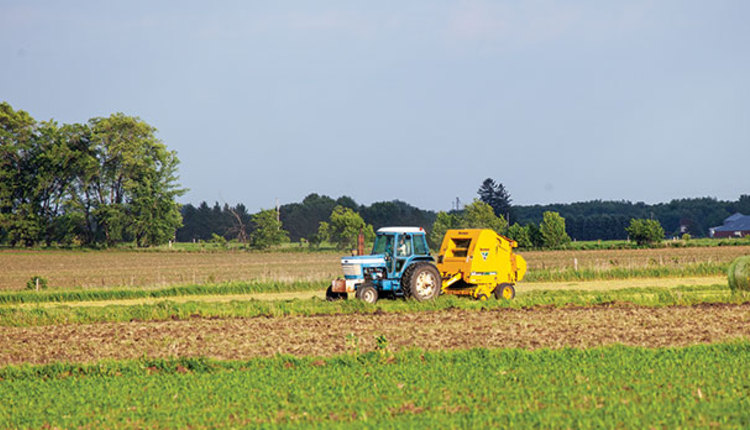Technology is changing the round baler market |
| By Adam Verner |
|
|
The author is a managing partner in Elite Ag LLC, Leesburg, Ga. He also is active in the family farm in Rutledge. As the cold weather sets in and daylight hours shorten, this usually allows us to spend more time with our families; it also provides opportunity to ponder potential improvements for our haymaking operation. For some, it may be time for a baling tractor upgrade while others may feel the need to change their rake size or type. As farmers, it’s just our nature to get “bigger and better.” We don’t want to buy every acre of ground . . . just every acre that touches the ones we already own! This same philosophy to get bigger and better can be seen in the evolution of baling hay. We’ve progressed from making piles in the field with pitchforks to small square bales, then to round bales, and now to large square bales. Each inventor was looking for a way to cover more acres and harvest more tons in a day. New baler tech This is also the case for today’s major advancements in the round-baler market. We now have several manufacturers producing balers that don’t need to stop for tying or wrapping. Further, one manufacturer also has a self-propelled round baler in preproduction. These manufacturers are all pushing the limit when it comes to innovation in what most considered an old and somewhat stagnant market. Usually it’s been tractors, sprayers, or other harvesting segments that have inspired the most innovation, but these nonstop and self-propelled round balers are right there with some of the other new machine technologies. The tonnage that one of these new balers can push through is impressive and has had farmers talking in the coffee shop for some time now. Also impressive, though maybe not desirable, is the price tag that comes with each of these balers. Even so, there are farmers who can’t wait to get their hands on one of these machines. But will being one of the first owners be a good thing? Maybe, but there are some considerations to think about. The price on the “nonstop” balers and wrapper combos are estimated to be over $130,000 dollars. Since no models are currently for sale from dealers in the U.S., that price is mere speculation. Likewise, the retail price for the self-propelled unit has not been made available at this time either. I think these new innovations in round balers could really change things in the future. There will be an initial first flush of sales, but what concerns me are the second and third owners of these machines. In the past, most round balers have two or three different owners before they are “put out to pasture” and retired. These days, the first operators are putting more bales on them before they decide to trade; this is mostly because they are covering more acres. Used baler math The first owner usually takes most of the depreciation and, if a baler is traded-in having already made 15,000 bales, it can still have some useful life for its next owner. But if we are considering $150,000 or more for a new machine, and a used baler is usually 50 to 60 percent of the original cost, the baler with 15,000 bales is likely going to cost the second owner around $75,000. I know we get excited about these new improvements to our industry, but as a customer and dealer myself, I’m just not sure how many farmers are going to be willing to invest that much cash in a used baler. With that being said, it is inevitable that some of these balers will be sold and then be traded back in, but unless the manufacturers have figured out a way for these balers to last 50,000 bales, I’m not sure we can expense out $75,000 in depreciation on only 15,000 bales. That’s a cost of $5 per bale just to own the baler — without tractor, net wrap, fuel, or labor included. Over the past decade, the general calculation was $1 per bale depreciation, but in the last five years, it’s risen to about $1.50 . . . still a long way from $5. I think these new balers are great innovations to the hay and forage business, but in my opinion, one of the biggest hold ups in the round baler market isn’t the speed or acreage you can cover, but how long a baler will last before needing major work. I don’t see any reason why we can’t design a baler to last 40,000 bales before needing major work. This would help lower the cost of ownership associated with these high-tech balers of the future. Stay warm this winter. This article appeared in the January 2019 issue of Hay & Forage Grower on page 14. Not a subscriber? Click to get the print magazine. |
